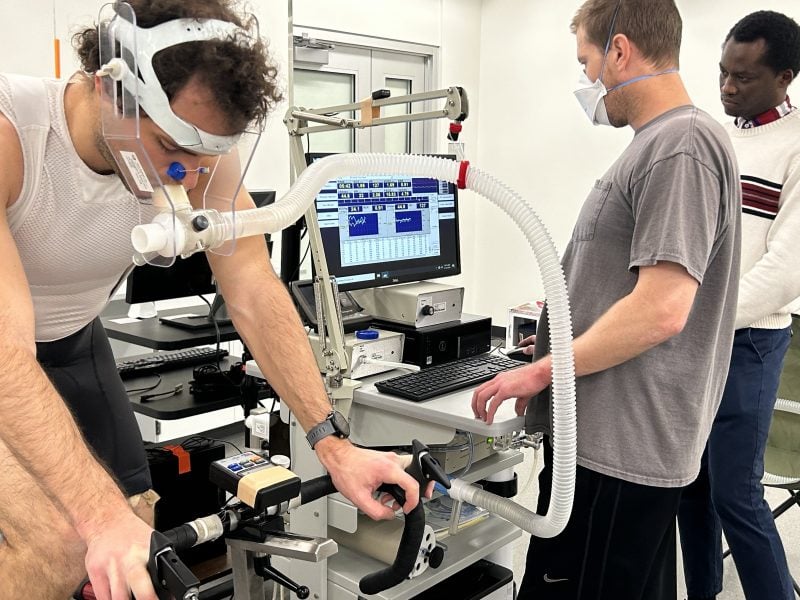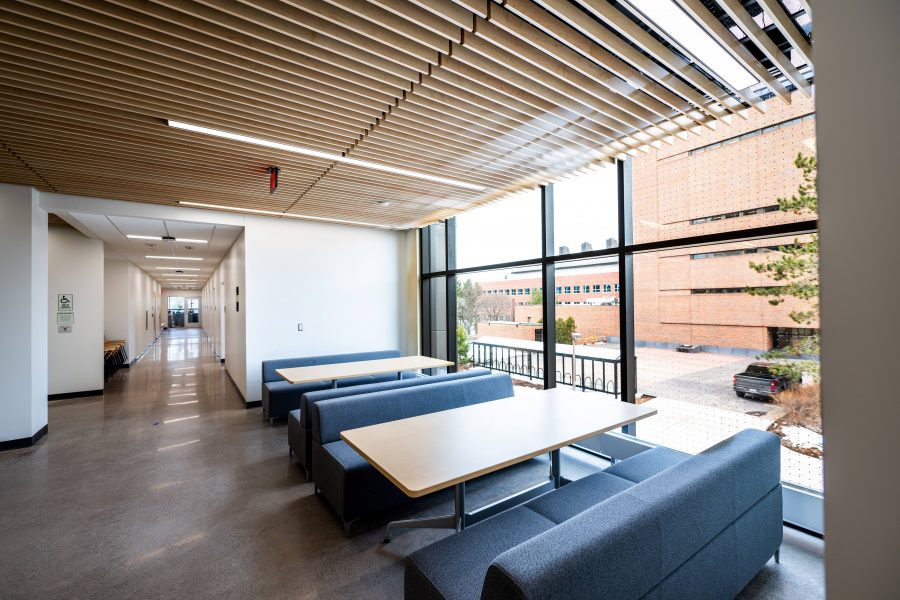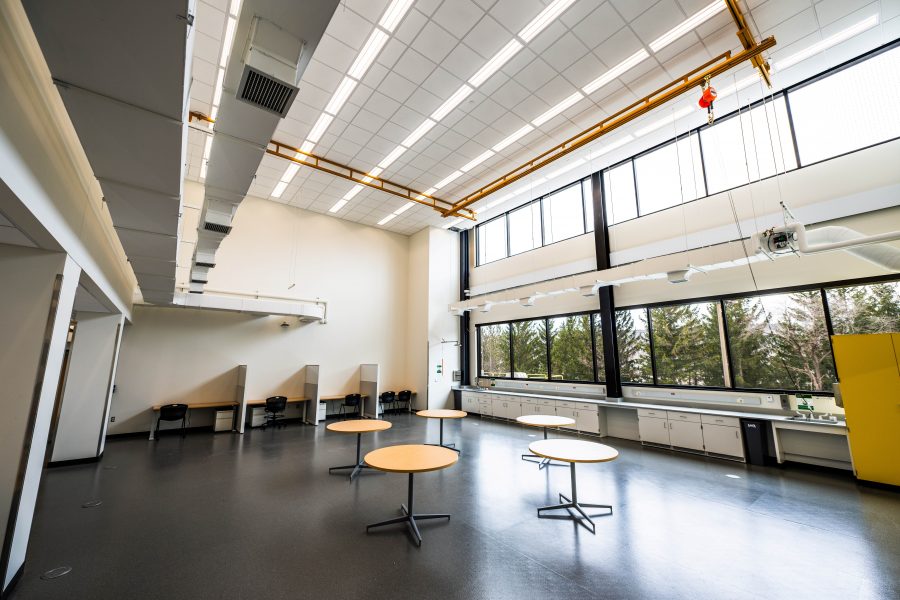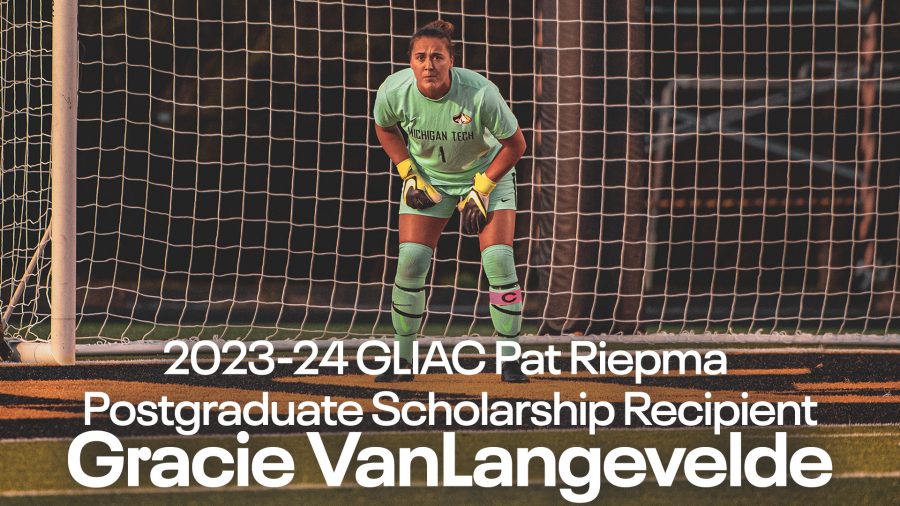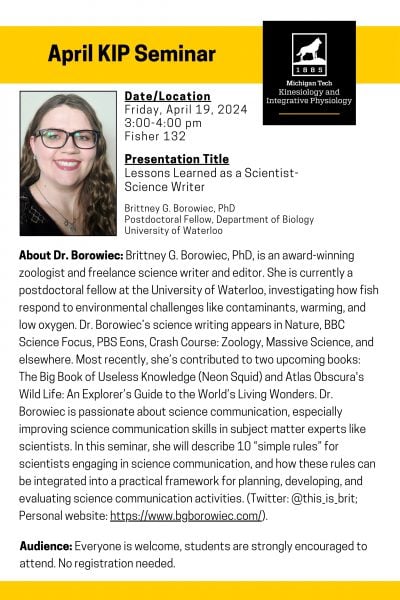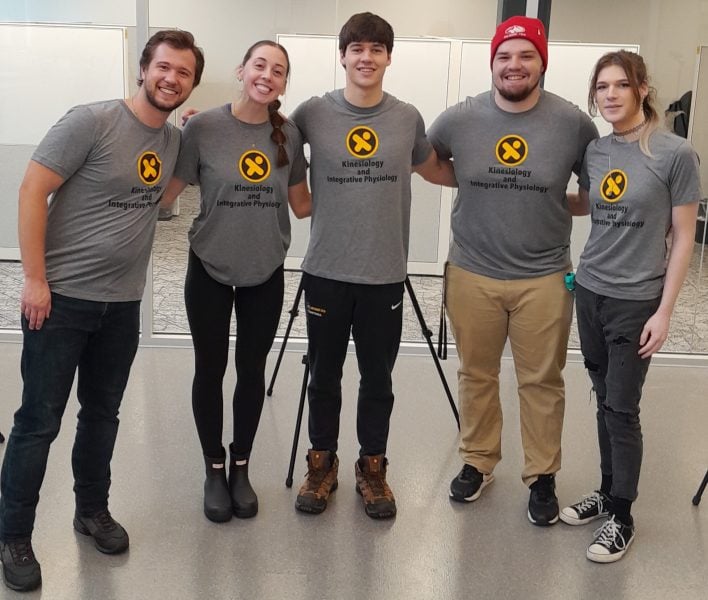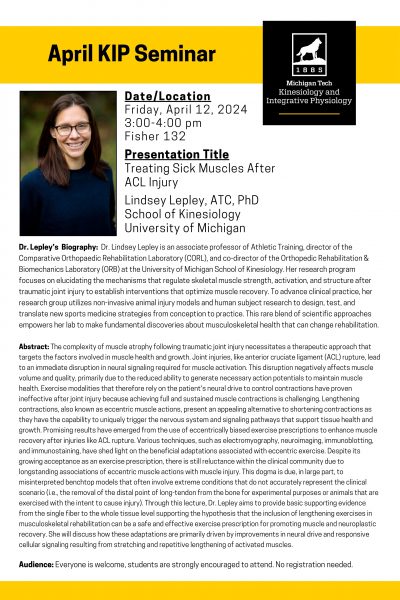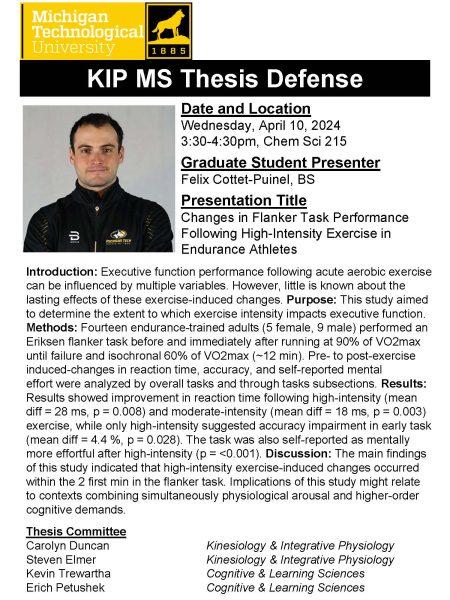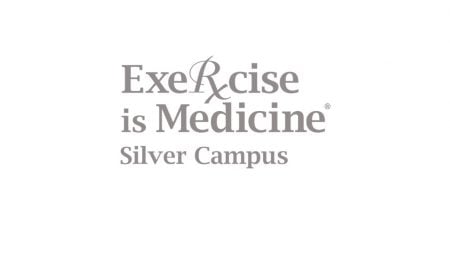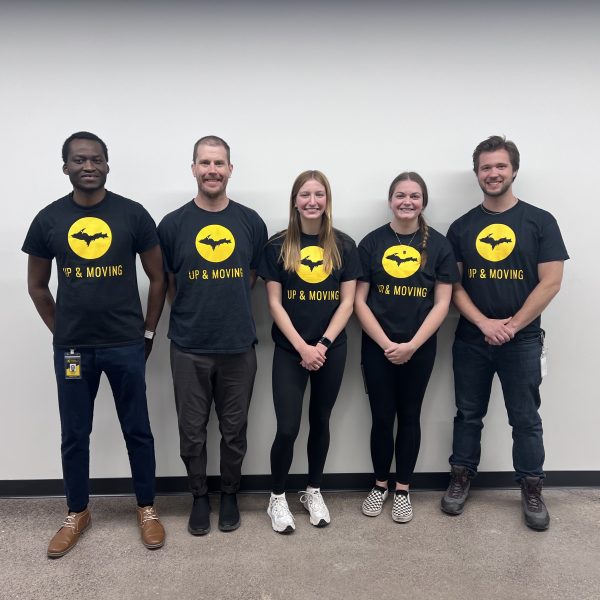KIP’s move into the Michigan Technological University’s H-STEM Engineering and Health Technologies Complex (H-STEM Complex) is complete. An informal open house and a ribbon-cutting ceremony are scheduled for April 26.
The H-STEM Complex: Transparent, Open, Shared and Flexible Laboratory Spaces
The H-STEM Complex includes newly constructed shared and flexible laboratory spaces co-located with renovated classrooms and learning spaces within an existing building (Chemical Sciences and Engineering). The Complex will permit teams of researchers and students to work together in collaborative spaces with shared equipment.
The H-STEM Complex is transparent. From the exterior, thanks to floor-to-ceiling windows, you can see into the labs. Similar interior design ensures those within and outside can see teams working together in shared, collaborative lab spaces. You can see the exciting work, including health research, teaching, and outreach strategy happening inside.
KIP interim department chair Steven Elmer is looking forward to increased visibility for the discoveries and developments happening there. “Faculty and students are thrilled to move into the H-STEM Complex,” said Elmer. “We’re excited to showcase the human health research technologies and innovations happening at Michigan Tech. Having a central location on campus highlights the importance of our department’s research in the Michigan Tech portfolio. The H-STEM Complex is a cornerstone of Tech’s efforts to continue attracting high-caliber faculty and research funding, graduate and undergraduate students. It will help us as we move toward our goal of being a leading kinesiology program.”
Steve Elmer Shares Thoughts on the H-STEM Complex
We had a chance to catch up with Steve Elmer to learn more about the H-STEM Complex and it’s impact on the Kinesiology and Integrative Physiology Department.
What are you looking forward to most with the move to H-STEM?
Steve Elmer: We are most excited about having 1) our students, staff, and faculty all located in close proximity to one another on the first floor and 2) state-of-the-art laboratory space for conducting research and teaching.
Please describe some of the new features and amenities in H-STEM that make it conducive to research?
Steve Elmer: The new H-STEM building provides ample space for both research and teaching. For example, some of the research laboratories have larger open floor plans which allow for evaluation of human movement to understand changes that occur due to age, injury, disease, or exercise. Our exercise physiology and biomechanics teaching laboratories have adequate space for hands-on discovery-based learning along with a classroom for pre-laboratory instruction and student project work.
The research and teaching laboratories are located adjacent to each other, and many are connected which allows for collaboration among faculty and students. The building also has parking and easy access for community members who volunteer to participate in research studies. Meeting and conference room space for discussion and presentation is located in between the laboratories and offices for graduate students, staff, and faculty. In short, this state-of-the-art facility will support our research and teaching needs and long-term goal of becoming a nationally ranked kinesiology department.
What obstacles have you had to overcome with the transition into the H-STEM Complex?
Steve Elmer: One of the biggest challenges has simply been time. Many of our faculty and staff were hired with the new H-STEM building on the horizon and they have been patiently waiting for the transition to a new building with more space and greater capacity for research and teaching.
What exciting new opportunities or initiatives planned for KIP in the new H-STEM Complex?
Steve Elmer: In early April we hosted 200+ K-12 students from several local schools in celebration of National Biomechanics Day. This was our first outreach event in the new H-STEM building and the largest one to date for our department. It was a big hit! The University is planning a ribbon cutting ceremony on April 25 and we are planning an informal department open house that same day. It’d be great to see some of the alums come out for those events.
How does H-STEM align with KIPs vision for the future of research?
Steve Elmer: The new H-STEM Complex offers the robust infrastructure needed to position the Department to become a nationally ranked kinesiology program. Specifically, it will help the Department to increase research expenditures and number of doctorate degrees awarded, both of which are critical as Michigan Tech transitions to an R1 University for 2025.
What is a memorable moment from the planning process?
Steve Elmer: One of the most memorable moments was seeing the excitement from graduate students as they did a walk-through tour of the building while it was still under construction. Students were literally high fiving and jumping up and down and ready to move in that day!
How will the move to H-STEM benefit your undergraduates?
Steve Elmer: Undergraduate instructional lab sections will be delivered in our new exercise physiology and biomechanics teaching laboratories. These laboratories will now have adequate space for pre-laboratory instruction, large instructional equipment, team-based experiments, and student project work. Collectively, this will provide students with hands-on discovery-based learning experiences.
How will the move to H-STEM benefit your graduates?
Steve Elmer: The new H-STEM building will provide a supportive and welcoming environment for our graduate student cohort. Being together as a group in one building on the same floor will accelerate their research, facilitate more collaboration, and aid in their professional development.
About the Kinesiology and Integrative Physiology Department at Michigan Technological University
Tomorrow needs healthy communities. The Department of Kinesiology and Integrative Physiology (KIP) at Michigan Technological University helps to build them. The KIP Department offers undergraduate degrees in exercise science and sports and fitness management. Graduate degree offerings include a PhD in Integrative Physiology as well as a master’s and accelerated master’s degree in Kinesiology. Housed in the new H-STEM Complex, KIP leads several important health and wellness collaborative research projects across eight different labs. Supercharge your human health skills to meet the demands of an increasingly active and aging society at a flagship public research university powered by science, technology, engineering, and math.
Questions? Contact us at kip@mtu.edu. Follow all the latest happenings on Instagram, Twitter, LinkedIn, Facebook, and the KIP Blog.
